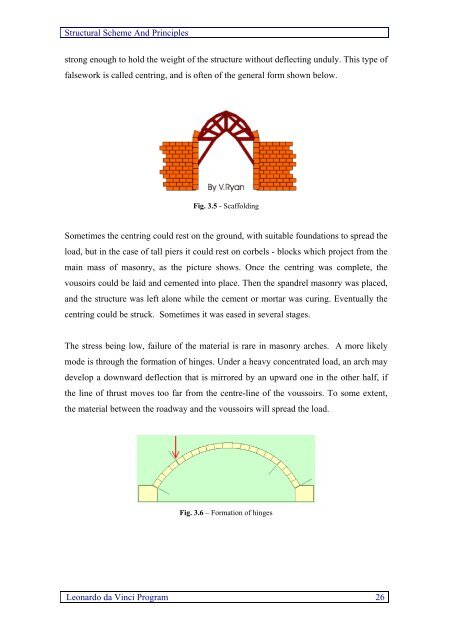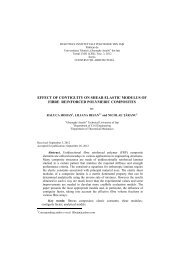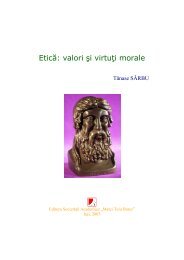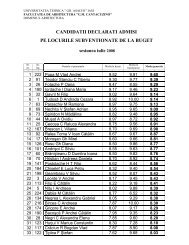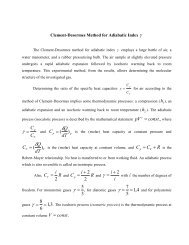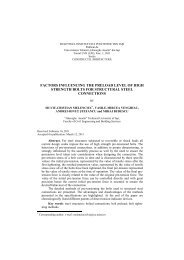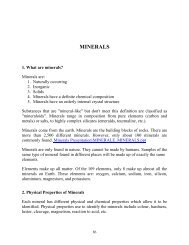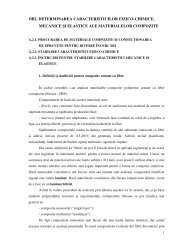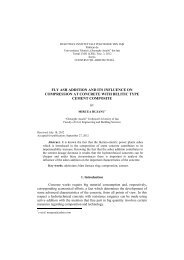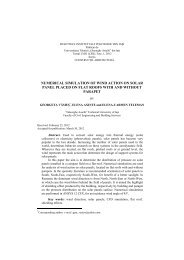STRENGTHENING OF STONE MASONRY ARCH BRIDGES THREE ...
STRENGTHENING OF STONE MASONRY ARCH BRIDGES THREE ...
STRENGTHENING OF STONE MASONRY ARCH BRIDGES THREE ...
Create successful ePaper yourself
Turn your PDF publications into a flip-book with our unique Google optimized e-Paper software.
Structural Scheme And Principles<br />
strong enough to hold the weight of the structure without deflecting unduly. This type of<br />
falsework is called centring, and is often of the general form shown below.<br />
Fig. 3.5 - Scaffolding<br />
Sometimes the centring could rest on the ground, with suitable foundations to spread the<br />
load, but in the case of tall piers it could rest on corbels - blocks which project from the<br />
main mass of masonry, as the picture shows. Once the centring was complete, the<br />
vousoirs could be laid and cemented into place. Then the spandrel masonry was placed,<br />
and the structure was left alone while the cement or mortar was curing. Eventually the<br />
centring could be struck. Sometimes it was eased in several stages.<br />
The stress being low, failure of the material is rare in masonry arches. A more likely<br />
mode is through the formation of hinges. Under a heavy concentrated load, an arch may<br />
develop a downward deflection that is mirrored by an upward one in the other half, if<br />
the line of thrust moves too far from the centre-line of the voussoirs. To some extent,<br />
the material between the roadway and the voussoirs will spread the load.<br />
Fig. 3.6 – Formation of hinges<br />
Leonardo da Vinci Program 26


